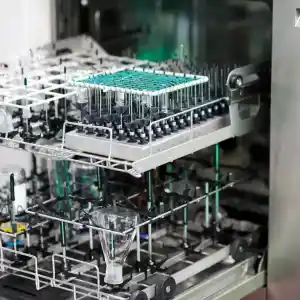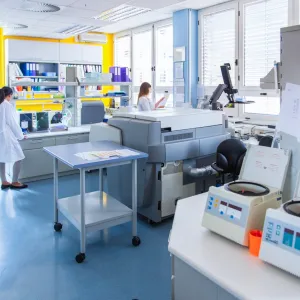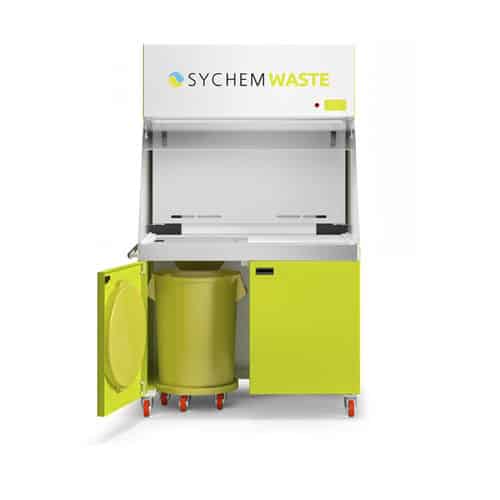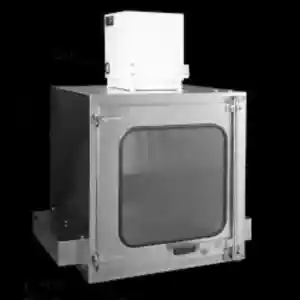The Best “Forever Home” Laboratory Glassware Washer is the one that will meet your requirements for many years ahead. You might ask why I use the phrase “forever home”; I use it because I was a purchaser of laboratory equipment for many years, and in the early part of my career I made a few mistakes with my purchases, as well as inheriting some equipment that really didn’t fit the criteria. You’ve probably been there too – wondering why something was purchased: it might be too big, too small, it is missing the second most important feature, or maybe it’s a bottleneck etc. Usually mistakes in identifying the right laboratory glassware washer for you boils down to not having a rigorous enough process in the pre-purchase period. In this article, we are going to take you through all the important steps in the selection process. If you want to be known as the Laboratory Glassware Washer whisperer, read on!
Here is a quick summary of how to select the best Laboratory Glassware Washer, and we’ll expand on each topic below.
- Purpose
- Throughput
- Utility requirements
- Choosing the right features of your laboratory glassware washer
- Budget and other important considerations
Purpose:
This is the most important consideration and the best way to tackle this question is to speak to the person who first requested this be purchased in order to understand his or her need and vision; but this isn’t the only person to consult:
- Who is going to use the laboratory glassware washer? It is only going to be used by one lab? Or is an entire department going to use it? Or are you buying several to service an entire building?
- It is important to consult with the users of the glassware (the laboratory personnel) to ask exactly what type of glassware needs to be washed, how much and how often. Prepare a list of questions and survey everyone that will be using the glasswasher. Here are some sample questions:
- How much glassware is being using now?
- Is the amount going to change over the next five to ten years?
- How often do they need the glassware to be processed?
- What type of glassware is being washed?
- Is there any other material that needs to be washed?
You can expand these questions if the laboratory glassware washer will be used for an entire department or building to ask additional questions such as, will new faculty be recruited and what will be the approximate increase in glassware washing.
Once you have this basic information, you can calculate how many glassware needs to be washed per day. This is how you determine throughput.
Throughput:
Once you know how much glassware needs to be washed a day (now, as well as far into the future) as well as the type of glassware that will be used, you can start gathering information on different models of laboratory glassware washers. Lab specific laboratory glassware washers usually include one or more smaller freestanding or under the counter glassware washers, while glassware washers that service a department or building are often found in glassware “prep” rooms and this often means larger chambers with a higher capacity. In some cases, the applications and workflow might even require separation into soiled/dirty and clean areas and a pass-through laboratory glassware washer might be required.
Once you have your typical day of glass washing calculated, you are ready to determine the number and size of the laboratory glassware washer you will need. It is also important to take the available space in the laboratory into account. Laboratory glassware washers can be
- freestanding
- under the counter
- stacked in a column
- placed on a base to increase working height for ergonomic reasons
- integrated into stainless steel walls for the most hygienic work environment
- Small lab washers have a hinged door, whereas the large chamber lab washers are usually equipped with one or two doors, which are often vertical. Two-door lab washers are predominantly encountered when the glassware processing room is divided into a dirty/soiled side where you load the contaminated glassware and a clean side where the wash load is removed once the program cycle has finished.
An important note is to remember that the outward dimensions are different than the chamber size. Make sure that you pay attention to both! The size of the chamber determines the number of loading levels and as such the amount of glassware that can be cleaned within one cycle. In addition to keeping the outward dimensions in mind when space planning, you also need to keep some room for at least two 5L or 10L detergent canisters at the side of the washer. These can be in a side cabinet attached to the washer or, in case the washer is integrated into casework, under the sink next to the washer.
Utility requirements:
This has to be considered before you are quite finished with Throughput. This is when you take your list of questions to your building maintenance personnel. Find out what utilities are available in the space designated for your laboratory glasswashers. This is really important!
Here are some sample questions for you:
- What type of electrical is in the area/room that the glasswasher is going into?
- If it is not adequate, is an upgrade possible (and what is the cost)?
- Are there connections for cold, hot and demineralized water? Not all of these connections are necessary for all glasswashers, but you need to have a starting place.
- If hot and cold water is used, will you want a water softener – this depends on the local water quality. Some lab washers have an integrated water softener, whereas others require separate softening equipment.
- Is there a drain in the area? If not, what is the cost to install?
Some additional information about electrical requirements: Washers connected to 115V which is typical for a lab have much longer cycle times than washers connected to a three phase 208V connection. It is really worth considering the upgrade to this type of voltage, especially for labs using more than one washer or that have lot of glassware to clean each day in order to obtain shorter cycle times.
Also, a special note about drains: Many local codes require drain water be sufficiently “quenched” or cooled before it is released to the drain. Liaison with your building operations team to access the local code and inquire with the manufacturer about configuring the washer to meet these requirements.
Choosing the right features of your laboratory glassware washer
Door Type
Lab washers can have a glass door or solid door. A glass door allows the user to look inside the chamber while a program is running. While a solid door does not offer this view, it is the less expensive choice. Check to see if the solid door version has a monitoring feature to let you know if a spray arm is blocked, since you won’t be able to visualize it.
Cycles and Programmability
Optimum cleaning performance and energy efficiency are both important. During the “Purpose” fact-finding stage, the analytical grade would have been determined (the degree of cleanliness or the residual contamination which is allowed to remain on the glassware). The analytical grade desired dictates what features are needed in the laboratory glassware washer. Ensure that you choose a laboratory glassware washer that will meet your analytical grade, for now, and for future requirements.
To achieve excellent cleaning results combined with the efficient use of resources, it is important that the laboratory glassware washer is equipped with state-of-the-art mechanical components and innovative features which allow for sufficient settings and programming capabilities. For example, the circulation pump is the heart of every glassware washer; a standard circulation pump operates at the same speed no matter how much cleaning power is needed. A variable speed pump on the other hand automatically adjusts to the different program stages and needs, which allows for optimum cleaning results while also reducing water and energy consumption. An overall improved water efficiency when using laboratory glassware washers automatically results in an optimized use of cleaning agents which are required in the cleaning process. Since cleaning agents are a recurring cost factor, it is important to look at ways to reduce the consumption to save money throughout the lifetime of the equipment.
Cleaning Agents
When choosing a lab washer, the cleaning agents needed for each program cycle have to be selected too. For cleaning glassware in a laboratory glassware washer, a lab grade detergent and neutralizer are needed. For some applications, like washing glassware that has contained petroleum products, an additional chemical such an emulsifier might be needed. Detergents can be in powder or liquid form: generally, powder detergent is added to a dosing compartment which is integrated in the door, whereas liquid detergent is pumped in with dosing pumps. The advantage of using liquid detergent is predominantly that the required quantity is fed to the chamber automatically depending on the selected program. This avoids under- or overdosing which can happen when the detergent is added manually. The way in which the detergent will be added and how the amount needed is actually very intricate and your expert equipment specialist at ARES Distribution can guide you through the more intricate details. Important questions to ask are whether there is a dosage monitoring system and quantity controls.
Drying
Some lab washers are equipped with a drying cycle where the room ambient air first filtered by a HEPA filter and then is heated up and blown into the wash chamber to dry the glassware from the outside as well as inside. This is a good option to choose if you’d like to eliminate the need for additional equipment such as drying ovens or to decrease extra space you would need if you let the glassware dry on shelves.
Temperature
It is important to have flexible programming capabilities to ensure the right temperature and time settings for any application from cleaning to disinfection or even pasteurization. For example, typical laboratory glassware with medium soiling can be cleaned at a temperature of 75o C with a holding time of 3 minutes. Plastic lab ware which is not that temperature resistant may need a lower temperature with a longer holding time instead. A standard program cycle for critical research applications takes about 30 to 45 minutes; however, depending on the application and soiling, a program cycle could be reduced to only 20 minutes.
Baskets and Inserts
Each laboratory glasswasher needs baskets and inserts to properly hold the glassware during the cleaning process. These baskets and inserts are selected based on the type and size of the glassware. For example, if you are washing pipettes, you will need a basket or load carrier with injector nozzles for adequate inside cleaning of the inside of the pipette. The rule of thumb is that the taller the glassware is, the longer the injector nozzle should be and the larger the diameter of the glassware, the broader the nozzle should be. Make sure you select the corresponding adapter or injector nozzle for cleaning larger glassware.
It is also important to note if you have existing washers that are using these types of accessories and whether your new machine will have interchangeability of accessories with your existing baskets and inserts.
Budget and Other Important Considerations
Validation
Certain applications require validation protocols for the laboratory washer to meet standards set by entities such as the FDA. The acronyms IQ/OQ/PQ refer to qualification standards that some companies or experiments must adhere to. Whether or not you will have to meet these standards should be a question for the lab manager, or the study director.
Warranty and Service
As with any complex mechanical equipment, it is always important to review the manufacturer warranty and service network when evaluating your purchase.
Budget
Last but not least, monetary resources can sometimes be limited for laboratory equipment and the temptation is to choose a high-end “house” dishwasher for the lab. This really won’t work out in the end; and may end up causing you some real grief. The biggest issue is that you really don’t want to impact the experiments because the glassware is not cleaned properly. Laboratory glassware washers need to be compliant with specific regulatory and safety guidelines for laboratory equipment and are meant to clean laboratory glassware which entails exposure to harsh chemicals that only higher-quality stainless steel can withstand. The contamination and cleaning requirements in a laboratory are completely different than in a kitchen and thus laboratory glassware washers are much more powerful than residential dishwashers. Residential dishwashers do not allow for the required programming capabilities and the baskets and inserts for a kitchen dishwasher cannot properly hold lab glassware and utensils. You cannot clean pipettes or narrow-necked volumetric cylinders, because this type of glassware needs to be cleaned from the inside with injectors on the wash racks.
In conclusion, you can now see that purchasing a laboratory glassware washer deserves your special consideration. There are many factors to consider, but if your approach is thorough and you ask the right questions (and make sure they get answered) your new purchase will become the “Forever Home” Laboratory Glassware Washer, and a purchase you can be proud of for many years to come.
For a deeper dive into the technical side of choosing Laboratory Glassware Washers please see this article: How to select the best features for a Laboratory Glassware Washer



